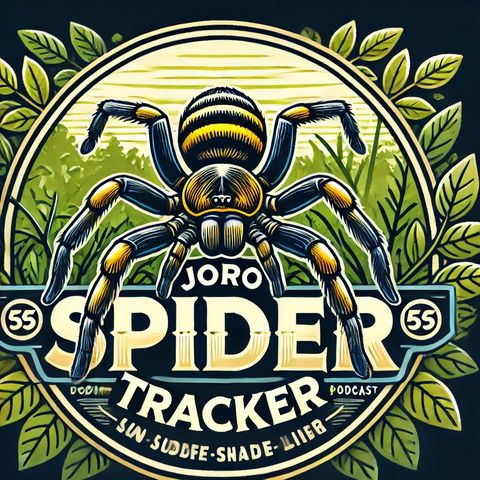Joro Spider's Expanding Reach: Exploring the Ecological Impacts of a Non-Native Species

Regístrate gratis
Escucha este episodio y muchos más. ¡Disfruta de los mejores podcasts en Spreaker!
Descarga y escucha en cualquier lugar
Descarga tus episodios favoritos y disfrútalos, ¡dondequiera que estés! Regístrate o inicia sesión ahora para acceder a la escucha sin conexión.
Descripción
The Joro spider, scientifically known as Trichonephila clavata, is a species native to East Asia, particularly Japan, Korea, and China, which has recently been making headlines as it extends its...
mostra más**Biology and Ecology of the Joro Spider:**
The Joro spider belongs to the family Araneidae, which includes many orb-weaver spiders known for their wheel-shaped webs. Adult Joro spiders can be impressive in size, with females boasting leg spans of about 3 to 4 inches, distinguished by their vivid yellow, blue, and red markings. Males are significantly smaller and less colorful, which is common among many spider species.
The web of a Joro spider is strong and expansive, often spanning several feet. The silk used to spin these webs has been studied for its strength and elasticity, which are of great interest for applications in materials science.
One notable aspect of the Joro spider is its hardiness, which allows it to survive in environments that are colder than those of its native range. This adaptability is one reason why the spider could potentially establish itself successfully in diverse geographic areas.
**Diet and Environmental Impact:**
Joro spiders primarily feed on a variety of insects, which they capture in their large webs. Their diet includes common pests, which can make them beneficial from a pest control perspective. However, their impact on local ecosystems outside their native range is not yet fully understood and is a subject of ongoing study.
Predation by Joro spiders could potentially disrupt local food webs by decreasing the populations of native insects, which in turn could affect the populations of other predators. On the other hand, their webs serve as a significant food source for birds in their native habitat, suggesting that they may integrate into new ecosystems in ways that are not yet anticipated.
**Human Interaction and Management:**
The spread of Joro spiders has raised questions about how to manage their presence. While they are not harmful to humans—their venom is not potent enough to cause serious harm to humans—their large size and appearance can be alarming, leading to negative reactions from the public.
Management strategies focus on monitoring their spread and studying their ecological impact to inform potential control methods. Public education is also crucial, as it helps address misconceptions about the threat posed by these spiders and can aid in reducing unnecessary panic.
**Conclusion:**
The Joro spider’s expansion into new territories represents a fascinating case study in the adaptation and spread of non-native species. While the potential benefits and risks are still being evaluated, the movement of this spider across continents reminds us of the complex and often unpredictable nature of ecosystems. As scientists uncover more about the Joro spider's biology and ecological role, both in its native and non-native ranges, clearer strategies for coexistence or management will likely emerge, highlighting the dynamic balance between species conservation and ecosystem health.
Información
| Autor | QP-4 |
| Página web | - |
| Etiquetas |
Copyright 2024 - Spreaker Inc. an iHeartMedia Company
